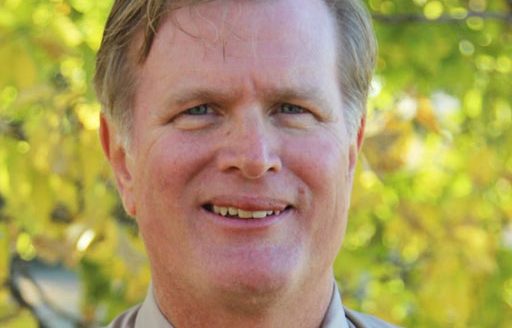Weston McCary believes that preserving and conserving groundwater, particularly with the High Plains aquifer system, is a marathon, not a sprint.
McCary, technology projects coordinator with the Kansas Water Office, is based in Colby. He has a background in education and taught at the Northwest Kansas Technical College (now known as Fort Hays Tech Northwest) in Goodland, Kansas. McCary taught students how technology can improve efficiency, and that applies to water application and conservation.

He has seen first-hand how irrigators working together in the Groundwater Management District No. 4 formed a Local Enhanced Management Area in northwest Kansas to reduce pumping and extend the life of the Ogallala Aquifer in the area.
He believes in creating opportunities for all entities to learn from each other and to work with farmers.
“Some of what was needed was the extension of an olive branch, and the first step is to listen,” McCary said.
In recent years, the plight of the Ogallala Aquifer’s depletion has been covered by national and international news outlets, he said. What McCary took note of is that it is not a new issue. Maps and experts have been able to track the depletion and provide users with estimates and projections that can help the end users.
It was not all that long ago when all the parties, irrigators, feedyards and dairies, municipalities and state agencies, seemed to work in silos. Now the leaders in the various entities are on the same page about the importance of extending the life, he said.
The aquifer is important to western Kansas and High Plains agriculture, and the economies of the Sunflower state and other states also depend on its viability. The individual producer also has a stake in it, particularly if he or she wants future generations of his or her family to be able to use the water to grow crops or operate a feedyard or dairy.
Feedyards and dairy operators can add value to their products by noting they are being conservation and climate conscious, McCary said. Companies have shown they are willing to pay premiums verified through block chain processes because consumers believe it is good for the environment.
McCary likes seeing that because it represents local control from the irrigator to the feedyard and dairy.
“We are seeing dairy and beef industries as influencers,” McCary said. “They are treating water security as food security. When you look at exports, 30% of beef we raise is going overseas, and it is all connected. The Chinese middle class is growing, and they want protein. They want more red meat in their diets.”
Improving water conservation will remain an important goal, he said. The Kansas Department of Agriculture and Kansas Water Office recently received a $50 million grant to help High Plains aquifer users. The monies can help with technology upgrades to center pivots to improve efficiencies, McCary said.
He also pointed to the launching of the Water Innovations System and Education program. That program focuses on innovative technologies, best management practices and education for water and soil conservation across the entire state.
As part of the program, Groundwater District No. 5, which is known as the Big Bend district, based in Stafford, has begun a peer-to-peer program in which senior crop producers can mentor junior and other producers. The information provides a way for irrigators and users to have candid conversations and network together.
“It is fun to watch those who are participating and those who are listening,” he said. “Producers are willing to help other producers.”
McCary credits Gov. Laura Kelly and the Kansas legislature for its commitment to today and future water and agricultural projects. Strategic planning will continue to be a part of the process, and he said feedback from people throughout the economic chain is crucial to continuing its viability.
Dave Bergmeier can be reached at 620-227-1822 or [email protected].




